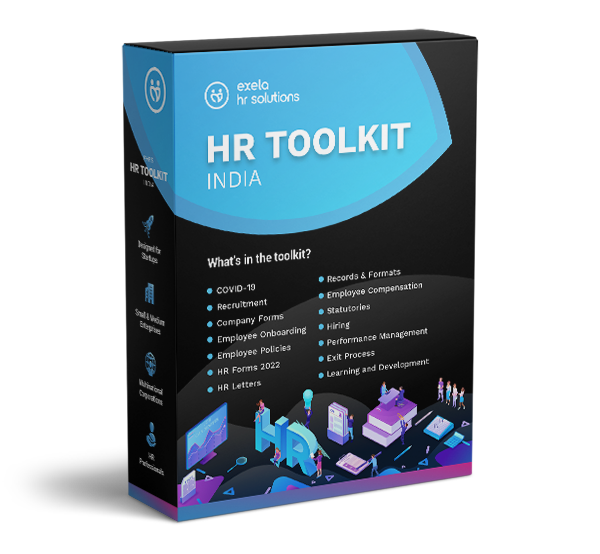
Recruitment Process Outsourcing is the practice of outsourcing all or part of an organization's recruitment process to an external provider.
RPO providers are an extension of the client's HR department. They manage the entire recruitment process right from sourcing candidates to onboarding.
The Significance of Restructuring in Businesses
Restructuring is a critical process that businesses undergo to improve their performance, reduce costs, and increase efficiency.
It involves making significant changes to the organization's structure, operations, and processes. This helps adapt to changing market conditions, technological advancements, or financial challenges.
This blog will explore the role of RPO in helping businesses undergoing restructuring.
We will provide an overview of business restructuring, its challenges, and its impact on HR and recruitment.
We will also discuss the benefits like:
- RPO in restructuring
- Implementation strategies
- Overcoming challenges
- Measuring success
- Future trends in RPO and restructuring
Understanding Business Restructuring
Reasons for Restructuring
The reasons for restructuring can vary from company to company, but some common causes include:
- Financial difficulties
- Rapid growth or expansion
- Merger or acquisition
- Change in leadership
- Market changes or shifts
- Technological advancements
- Competitive pressures
- Regulatory compliance
- Cost reduction initiatives
- Strategic repositioning
Challenges and Complexities Involved
Restructuring can be complex and challenging, requiring careful planning, execution, and management.
It involves making significant changes to the organization's structure, operations, and processes, which can impact employees, customers, and stakeholders.
It can also be time-consuming and costly, requiring significant resources and expertise.
The Impact on HR and Recruitment
Restructuring can have a significant impact on HR and recruitment.
It can lead to layoffs, reassignments, and changes in job roles and responsibilities.
It can also create a need for new talent with specific skills and expertise. Traditional recruitment methods may need to be revised to meet the organization's changing needs, which is where RPO can play a crucial role.
Role of Recruitment in Restructuring
Why Recruitment is Crucial During Restructuring?
Recruitment is a critical component of restructuring as it helps organizations identify and acquire the talent they need to achieve their goals.
Here are 8 big reasons why it is crucial to hone in on recruitment matters during a business restructuring:
-
Maintaining Talent: Retaining key employees and attracting new talent ensures stability and expertise during restructuring.
-
Adapting Skills: Recruitment allows businesses to bring in skills and expertise aligned with the changing needs of the restructured organization.
-
Cultural Fit: Hiring individuals who embrace the new organizational culture can facilitate a smoother transition.
-
Filling Gaps: Identifying skill gaps and addressing them through recruitment helps fill all critical roles.
-
Innovation Boost: Fresh perspectives from new hires can inject innovation and creativity into the restructured business.
-
Employee Morale: Effective recruitment communicates a commitment to employee well-being, boosting morale during uncertainty.
-
Scalability: Building a flexible workforce allows the company to adapt to changing market conditions.
-
Competitiveness: Recruiting top talent enhances the company's competitive edge in the post-restructuring landscape.
RPO as a Solution
Providers can solve the challenges of traditional recruitment methods during restructuring because RPO providers can act as an extension of the client's HR department, managing the entire recruitment process from sourcing candidates to onboarding - all under one roof.
They can provide expertise, scalability, and cost-efficiency that traditional recruitment methods don't often offer.
Benefits of RPO in Restructuring
Cost-efficiency
Recruitment Process Outsourcing (RPO) can provide cost-efficiency during restructuring by reducing recruitment costs and providing scalability.
- Cost reduction strategies: RPO providers can help organizations reduce recruitment costs by providing economies of scale, reducing the need for in-house recruiters, and providing access to cost-effective recruitment technologies.
- Scalability: RPO providers can provide scalability during restructuring by quickly ramping up or down recruitment efforts based on the organization's changing needs. They can also provide access to a broader talent pool, which can help organizations to fill critical positions quickly.
Time Savings
RPO can save time during restructuring by speeding up the hiring process and providing immediate access to talent pools.
- Speeding up the hiring process: RPO providers can help organizations speed up hiring by providing expertise, technology, and resources that traditional recruitment methods may not offer. They can also help organizations identify and attract the right talent very quickly.
- Immediate access to talent pools: RPO providers can provide direct access to talent pools during restructuring, which can help organizations fill critical positions quickly. They can also provide access to passive candidates who may not be actively seeking new opportunities. Read this short study on active vs. passive candidates to learn more.
Expertise and Specialization
RPO can provide expertise and specialization during restructuring by providing industry-specific knowledge, compliance, and legal expertise.
- Industry-specific knowledge: RPO providers can provide industry-specific knowledge during restructuring, which can help organizations identify and attract the right talent with the right skills and expertise.
- Compliance and legal expertise: RPO providers can provide compliance and legal expertise during restructuring, which can help organizations avoid legal and regulatory issues related to recruitment.
Also Read: Navigating a Smooth RPO Transition: Step-by-Step Guide
Implementing RPO in a Business that is Actively Restructuring
Steps to Initiate RPO Services
Initiating RPO services during restructuring requires careful planning and execution.
Here are some quick tips for implementing RPO services during a business restructuring:
-
Assess Needs: Start by evaluating the talent requirements of the restructured organization to understand recruitment needs.
-
Define Objectives: Clearly outline your RPO goals, such as improving talent quality or reducing time-to-hire.
-
Choose a Partner: Select an RPO provider experienced in both restructuring scenarios and your industry.
-
Strategic Planning: Collaborate to develop a tailored recruitment strategy aligned with the restructuring plan.
-
Technology Integration: Ensure seamless integration of RPO technology with existing HR systems.
-
Candidate Sourcing: Implement targeted sourcing methods to attract talent with the right skills and mindset.
-
Streamlined Process: Optimize recruitment workflows for efficiency and faster onboarding.
-
Continuous Monitoring: Regularly evaluate RPO performance and adjust strategies as needed.
-
Communication: Maintain transparent communication between HR, leadership, and the RPO provider.
-
Scalability: Design the RPO solution to flexibly adapt to the restructured business's changing demands.
Customization Based on Business Needs
During restructuring, RPO services can be customized based on the organization's business needs.
Customization can include the finer details like:
- Defining the scope of the RPO services
- Identifying the right talent pools
- Defining the recruitment process
Collaboration between Internal HR and RPO Providers
Collaboration between internal HR and Recruitment Process Outsourcing (RPO) providers is vital during restructuring.
It ensures that the RPO services align with the organization's goals and needs and that the recruitment process is seamless and efficient.
Overcoming Challenges
Common Hurdles in RPO Implementation
Some common hurdles in RPO implementation during restructuring can include:
- Resistance to change
- Lack of alignment
- Unclear objectives
- Data integration challenges
- Cultural differences
- Budget constraints
- Scalability issues
- Technology adoption
- Candidate perception
- Compliance concerns
Strategies to Address Resistance or Skepticism
- Communication: Effective communication addresses resistance or skepticism towards RPO during restructuring. It is essential to communicate the benefits and how it can help the organization achieve its goals.
- Education and Training: Providing education and training to employees and stakeholders can help to address resistance or skepticism towards RPO during restructuring. It can help them understand the benefits and how it can help the organization achieve its goals.
- Involvement: Involving employees and stakeholders in the implementation process can help to address resistance or skepticism during restructuring. It can help them to feel more invested in the process and understand how RPO can help the organization achieve its goals.
Mitigating Risks and Ensuring a Smooth Transition
Mitigating risks and ensuring a smooth transition during RPO implementation is crucial during restructuring. It is essential to identify potential risks and develop strategies to minimize them. Ensuring that the RPO implementation process is seamless and efficient is also necessary.
Measuring Success of RPO Implementations
Key Performance Indicators (KPIs)
Measuring success during RPO implementation requires identifying key performance indicators (KPIs) that align with the organization's goals and needs. KPIs can include time-to-fill, cost-per-hire, quality-of-hire, and retention rates.
Continuous Improvement Strategies
Continuous improvement strategies can help organizations to improve their RPO services during restructuring. It can include identifying areas for improvement, implementing changes, and measuring the impact of those changes.
Tracking ROI and Tangible Benefits
Tracking ROI and tangible benefits can help organizations understand RPO's impact on their business during restructuring. It can include tracking cost savings, time savings, and performance improvements.
Future Trends in RPO and Restructuring
Technological Advancements in RPO
Technological advancements in Recruitment Process Outsourcing (RPO) can help organizations improve their recruitment process during restructuring. It can include AI and automation to streamline the recruitment process and improve the quality of hires.
The Role of AI and Automation
The role of AI and automation in RPO can help organizations improve their recruitment process during restructuring. It can include the use of:
- chatbots
- predictive analytics
- machine learning
- and robotic process automation
... to identify and attract the right talent quickly.
Conclusion
RPO can play a crucial role in helping businesses undergoing restructuring to identify and acquire the talent they need to achieve their goals.
It can provide cost-efficiency, time savings, expertise, and specialization that traditional recruitment methods may not be able to provide.
In conclusion, Recruitment Process Outsourcing (RPO) can provide significant benefits to businesses undergoing restructuring.
It is essential to understand the challenges involved, the benefits, and the strategies to implement RPO successfully.
Companies must, therefore, consider RPO as a strategic tool to help them achieve their goals and improve their performance.
Take the first step. Speak with an RPO expert today.
Sources: google.com | en.wikipedia.org | reddit.com | linkedin.com | twitter.com | medium.com
DISCLAIMER: The information on this site is for general information purposes only and is not intended to serve as legal advice. Laws governing the subject matter may change quickly and Exela cannot guarantee that all the information on this site is current or correct. Should you have specific legal questions about any of the information on this site, you should consult with a licensed attorney in your area.





